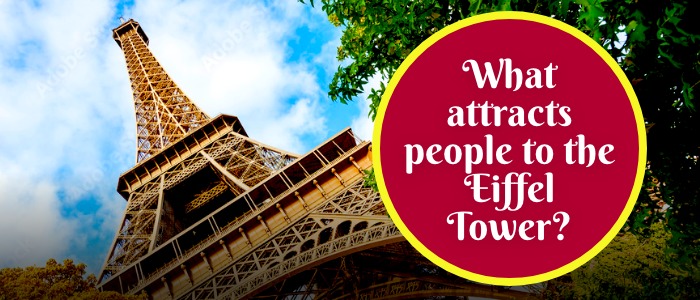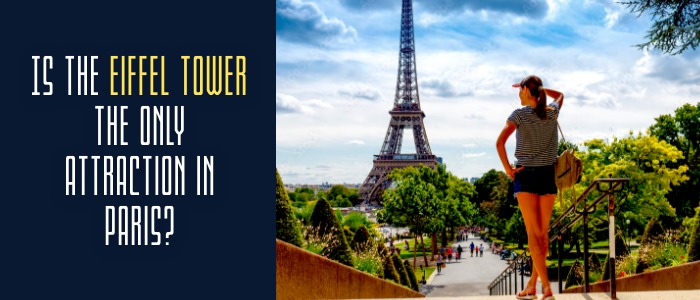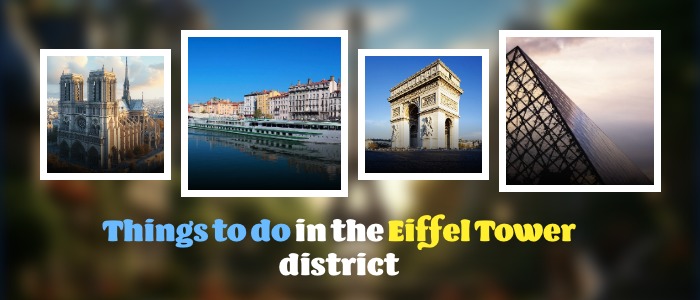The Whole History Of The Champ De Mars
Categories:
Travel
Introduction
The Champ de Mars in Paris is not symbolic merely as a big, green rectangle for people to hang out or take photos of the Eiffel Tower. The Champ de Mars' history is long and complex, revealing layers regarding France's past that include both pain and joy. When stepping on this turf today, one can be walking on ground that has witnessed royal parades, revolutionary meetings, moments of brotherhood, and bloodshed events, making the journey from the Champ de Mars to Eiffel Tower even more meaningful.The Early Beginnings
The Champ de Mars was later changed into a well-known public park, but its story began even earlier, before the Eiffel Tower became a familiar face next door. The land served as a military ground in France starting in the 17th century; soldiers drilled in formation, trained to be strong enough for wars that shaped the politics of Europe. "Mars" references a Roman warrior, to remind users that it is a place to prepare for discipline.At the time, the ground was open space without the familiar lawns and trees. Cannons fired over the field, and the marching soldiers were marching in order. It was a clear display of the might of the French army. For Parisians the space signified the power and willingness of the monarchy fight for its influence.
Royal Ceremonies and Displays
As time went on, the Champ de Mars transformed into more than a military drill ground. It became a venue for national and royal ceremonies that awed both the populace and strangers. Grand parades, pyrotechnic displays and demonstrations of solidarity regularly played out on the Champ de Mars. The French monarchy wanted to impress military prowess as well as highlight cultural splendour.During this period the Champ de Mars also became a platform for celebrating science, progress, and achievement. Balloons were released into the skies in experiments of early aviation, and public assemblies attracted thousands of curious onlookers. This conflation of military tradition and celebratory potential conferred a more complex and bifurcated identity to the Champ de Mars, a site of both seriousness and merriment.
Revolution and Tension
As the French Revolution developed in the late eighteenth century, the Champ de Mars changed from a site of casual gardening to a site of political demonstration and association, housing those from every corner, raising their voices in a call for reform. It was one of the sites where ordinary Parisians had community in their support of a unified, bastioned dream for liberty and equality, a legacy later connected with the Eiffel Tower French Revolution memories that still echo in Paris.Yet also the site of tragedy. The Champ de Mars also was the site of the infamous massacre that occurred in 1791, on a day when the National Guard firing on demonstrators demanding the expulsion of Louis XVI (Kings of France) struck, and its mark on the place was literal, signaling that the path to freedom is seldom straight, more often than not irregular and tempered with episodes of violence.
A Place of National Celebrations
In the years following the Revolution, and its troubled period, the Champs de Mars began to take on at least a partially symbolic role of unity for France, a satisfying sense of national pride, as continual festivals and public gatherings began to replace the past that it had witnessed and the odour emanating from what had once been the place of darker events. One of these events was the jubilant 1790 Festival of the Federation, and for a very short period of time, the added unity felt by many that day and the celebration of national unity appeared to be condoned while visitors and enthusiastic citizens paraded the field side by side. The surroundings at least provided a comforting mantle of hope and for many, a faint promise of something brighter.As we move into the nineteenth century, the site took on an even more important stance. For example, the universal exhibitions of Paris demonstrated advancements in industry and culture, with many universally acknowledged and significant advancements being shown at what would become the Champs de Mars. Visitors to the exhibition site from the world over marvelled at innovations and charted improvements in the contribution of the inventiveness of humankind that was made, and as many have commented, continues to reverberate throughout the park today.
The Arrival of the Eiffel Tower
A history of the Champ de Mars would of course feature the Eiffel Tower. The tower built for the Exposition Universelle in 1889 did, in fact redefine the very identity of the field. The Champ de Mars was not only a field but the setting for a new landmark. At that time, nobody knew that adding Champ De Mars to your itinerary could convert your visit into the best tour of Eiffel Tower.The iron tower generated its fair share of controversy. Its design produced mixed reviews - some were awestruck by the audacity of the design, whilst others found it to be absurd and shabby. However, as the tower became a symbol of French pride, the Champ de Mars was particularly suited to giving visitors a view of it. Standing on the lawns and looking up, it represented two forms of progress and the tension of memory.
War and Peace in the Twentieth Century
The last one hundred years have been a roller-coaster ride for Paris, and there are lessons to be learned from the Champ de Mars. The world wars brought the devastation that would frame the century, and the very same place once again became a place for troops to march across, and Parisians to drown during the years of occupation in anguish and loss. However, when things were normal again, the Champ de Mars became a stop for celebration and joy once again.With events like the parades for Bastille Day and national celebrations, the Champ de Mars once again came to life. The former space for renewal became a point of public life for the citizens - a place to share loss and pride. The Champ de Mars remained that same space where history is continually being created and written and where each generation shares its footprint on he soil of each reproduction.
The Champ de Mars Today
Nowadays, the Champ de Mars is recognized universally as the garden that defines the Eiffel Tower. Tourists and locals alike sit on its open stretches of grass to enjoy a picnic, take in the scene for photographs, or just take a quiet walk through the area. Children are enjoying themselves with their space to play, couples relaxing in the grass, artists sketching the Eiffel Tower - the kinds of activities where visitors capture the essence of leisure in the park. The space is an area of leisure that has transformed from what was an area for military practice and discipline.Still, when one takes a minute to stand in the middle of the Champ de Mars, it is difficult not to consider the history of the space. Beneath all the joy, the laughter, and calm, is an account of a struggle, unity and transformation all belied in the historical narrative of the area. It has been an area of revolutions, festivals of sake, violence, bloodshed, beauty - all interwoven in the historical representation of France.
Why the Champ de Mars Matters
What makes the Champ de Mars unique is not only its beauty or location, but its role as a witness to a nation going through centuries of changes. It tells the story of a nation that has survived wars and revolutions to come together again. The park is living proof that spaces are not merely physical places; they are emotional grounds with memories from the people who walked there before us.For the visitors today, the Champ de Mars is more than a backdrop for a picture. It is a living history lesson at the centre of Paris. Each picnic, festival, and peaceful stroll is a continuation of the story about a place that has evoked sorrow and joy. In its splendid, open carpets of grass and tree lined paths, one can feel the resilience of a city and a nation.
Final Thoughts
The history of the Champ de Mars is an elaborate fabric of military discipline, ceremony, revolution, celebration and daily life. From the military's use of it as a training ground to being a parking lot and a field at the foot of the Eiffel Tower, the Champ de Mars has seen every facet of the story France has lived.To walk through the Champ de Mars today is to walk through time itself. The laughter of children & families mixes with the sounds of past parades. The trees in the park deny none of what they remember in rustling. The inherent element of history rests a little easier in the expanse of the sky above. The past invites the visitors to linger a little longer to remember what it has witnessed each time.





